|
Notes: The station was situated on the Garston and Warrington railway which was opened by the St Helens Canal & Railway Company (SHC&RC) in two stages, between Runcorn Gap and Garston on 1 July1852, and between Runcorn Gap and a temporary station at Warrington White Cross on 1 February 1853. This created a route from Garston to Warrington where, by 1854, an onward connection to the Warrington and Stockport Railway at Arpley allowed trains to travel all the way to Manchester; this created an alternative to the London & North Western Railway’s (LNWR) Liverpool to Manchester route (originally opened in 1830 by the Liverpool & Manchester Railway).
 |
Fidler's Ferry station was located adjacent to the Sankey Canal, which had been extended from Sankey Bridges to Fiddlers Ferry in 1781. It was further extended to Widnes in 1833. Locks gave access to the River Mersey across which the ferry that gave its name to the area plied its trade. As a result of the canal activity and the ferry a small settlement had grown up and so it was an obvious place to provide a station. Since 21 July 1845 the SHC&RC had owned the canal.
The station opened as Fiddler's Ferry at the same time as the line on the 1 February 1853. The line being a double track resulted in the station being provided with two platforms which where located on the west side of a level crossing. The canal was very close to the railway tracks on the south side so there was little room for any facilities on that side. Therefore only a small waiting shelter was provided on the westbound platform. The stations main booking office, a single storey brick built structure was located on the north side of the line at the east end of the eastbound platform. A signalbox was also provided at the east end of the eastbound platform adjacent to the level crossing. To the north of the booking office and signalbox there was a station masters house.
On the west side of the crossing, on the north side of the line goods facilities were provided. They consisted of a siding, a crane and a small yard.
From the beginning Fiddlers Ferry station was served mostly by local services running between Garston and the Manchester area. Long distance services, including |
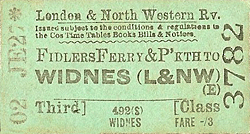 |
a Garston to London Kings Cross service passed through the site in 1858.
The LNWR had viewed the line as a potential competitor from the start. In the late 1850s the LNWR entered into negotiations with the SHC&RC, which resulted in them leasing it from the 1 September 1860. Not satisfied with this arrangement the LNWR went on to absorb the line on 1 September 1864. From that point forward the line was destined to be a secondary route as far as passenger services were concerned. The LNWR concentrated its goods services onto the line. By the time the line was absorbed a new route between Speke and Edge Hill allowed trains to run westwards to the LNWR main line station at Liverpool Lime Street. Local services in the LNWR era at Fiddlers Ferry tended to run between Liverpool Lime Street and Warrington Arpley or onwards to Manchester London Road.
In 1880 a signal box was opened at Fiddlers Ferry at the eastern end of the up platform. The box was a Saxby and Farmer type 6 box constructed from brick.
In April 1881 the LNWR renamed the station as 'Fiddler's Ferry and Penketh'. The village of Penketh lay just under a mile to the north of the line and the LNWR obviously hoped to attract extra passengers from there.
The December 1895 timetable showed Fiddlers Ferry and Penketh as having ten trains in each direction Monday-to-Saturday as shown in the table below. There were three trains in each direction on Sundays.
| Up Trains December 1895 |
Destination |
Down Trains December 1895 |
Destination |
| 7.12am |
Manchester London Road |
7.46am |
Liverpool Lime Street |
| 9.05am |
Warrington Arpley |
8.34am |
Liverpool Lime Street |
| 9.43am |
Manchester London Road |
9.52am |
Liverpool Lime Street |
| 12.24pm |
Lymm |
12.01pm |
Liverpool Lime Street |
| 2.17pm |
Warrington Bank Quay |
2.03pm |
Liverpool Lime Street |
| 3.27pm |
Manchester London Road |
3.28pm |
Liverpool Lime Street |
| 5.07pm |
Stockport |
5.20pm |
Liverpool Lime Street |
| 6.02pm |
Manchester London Road |
6.25pm |
Ditton Junction |
| 6.54pm |
Manchester London Road |
8.08pm |
Liverpool Lime Street |
| 8.57pm |
Manchester London Road |
9.55pm |
Liverpool Lime Street |
In 1904 the LNWR replaced the signalbox at Fiddlers Ferry station. The new box was on the south side of the line to the east of the level crossing. The box was an LNWR Type 4 having a brick base and timber upper cabin. It had a 15 lever frame (which was replaced in 1918 with a 25 lever frame).
For some reason the second 'd' was taken out of the station name on the 3rd May 1920 in effect changing the name to Fidlers Ferry & Penketh. In 1923 the line became part of the London Midland Scottish Railway (LMS) but little changed in the day to day operations.
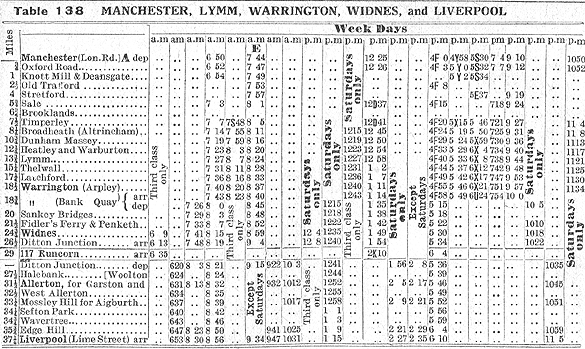 |
As the 20th century progressed and canal traffic declined Fidlers Ferry & Penketh station lost much of its business to road transport. Many of the local services no longer called at Fidlers Ferry & Penketh leaving it with only a handful of services on weekdays.
The station became part of the nationalised British Railways (London Midland Region) on 1 January 1948 but the new owners did not keep it open to passengers for very long closing it on the 2nd January 1950.
Passenger services continued to pass through the station after its closure mostly running between Ditton Junction and Manchester Oxford Road via Warrington Bank Quay Low Level. This service continued until 1st September 1962.
In 1959 regular traffic on the canal ceased and it was formally closed in 1963.
On 24 January 1960 the signal box was reduced to the status of a crossing frame. The goods yard had continued to be used for consignments of coal but it closed on 2 December 1963. The goods yard was lifted shortly afterwards and on 1 May 1965 the signal box closed completely and was demolished. The station booking office was also demolished during the 1960s but the station masters house was sold into private ownership.
In the mid 1960s a site adjacent to the line a short distance to the west of the station was chosen for a new power station. The power station was called Fiddlers Ferry and was provided with a ‘Merry-go-Round’ loop so that coal trains could unload without stopping. This ensured that the line through Fidlers Ferry & Penketh Station remained busy.
The stations platforms survived until the early 1980s when the canal basin was developed as a Marina. The marina works obliterated the westbound platform. Track relaying at the same time obliterated the eastbound platform.
In 2013 the line through the station site was still a busy freight route.
The 8D Association - Dedicated to promoting the history of South Lancashire and North Cheshire railways. Web Site
Ticket from Michael Stewart, timetable from Paul Wright and route map by Alan Young.
Sources:
- The St Helens Railway, Its Rivals and Successors – J M Tolston – The Oakwood Press 1982.
- Bradshaw Timetable December 1895.
- Bradshaw Timetable July 1922.
- LMS Timetable Summer 1932.
- BR (LMR) Timetable May - Sept 1948.
To see the other
stations on the Garston and Warrington railway click
on the station name: Garston Dock, Church Road, Speke, Halebank, Ditton, Ditton Mill, Widnes (1st),
Widnes South, Cuerdley,
Sankey Bridges,
Warrington
Bank Quay Low Level and Warrington
Arpley.
To see stations on the Warrington and Stockport railway click on the station name: Latchford, Thelwall, Lymm, Heatley &
Warburton,
Dunham Massey & Broadheath.
See also: Fiddlers Ferry Power Station railway |

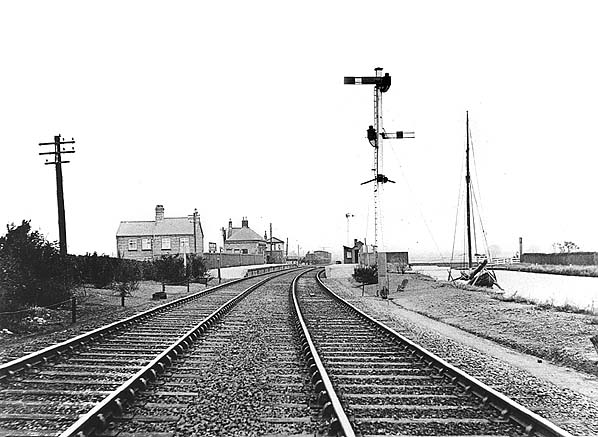


.jpg)
.jpg)
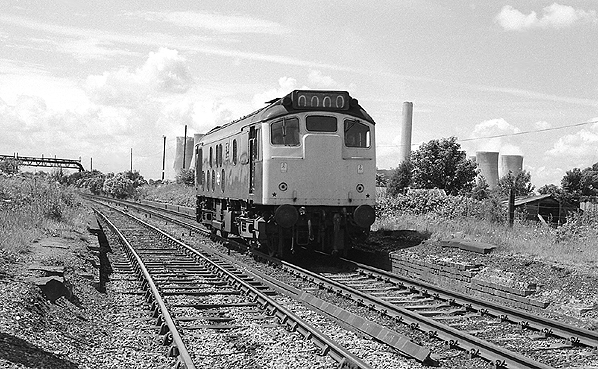
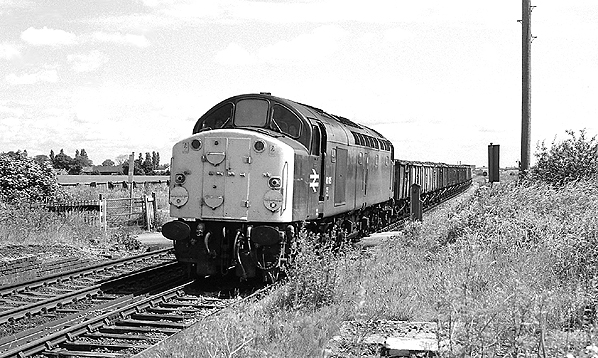

.jpg)
 Home Page
Home Page 


.jpg)
.jpg)






.jpg)
.jpg)
